Bernard Joseph Esposo Guerrero
San Sebastian Church
San Sebastian Church (Removed from tentative list)
San Sebastian Basilica Minore might be the only "all" steel church in the world (in my research, I haven't seen a church that is of its architectural type). There is no understatement of it - the walls, columns, pilars, naive, ceilings, etc. are all made of metal. Aside from that, it is largely known as the only prefabricated church in the world. San Sebastian is a National Treasure and a National Historical Landmark, and is declared as one of the four most endangered sites in the Philippines. In fact, it has been in the 100 list of endangered sites in the world by the World Monuments Fund in 1998. Having seen other churches of lesser universal value around gaining WHS titles, there is no way that this neo-gothic church can be denied of a WHS designation.
Keep reading 0 commentsBernard Joseph Esposo Guerrero
Chocolate Hills Natural Monument
Chocolate Hills Natural Monument (On tentative list)
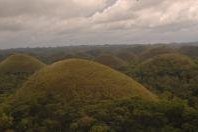
Definitely a must-see. I went here last November 2011. The Chocolate Hills are truly a world wonder. This hills are actually coral limestone-karst domes, believed to be underwater millions of years ago but have been uplifted to the surface due to tectonic movements. There are two places to go to in order to have the best views of these famed national geological monuments: Sagbayan Park or the Chocolate Hills Viewdeck. Entrance fee is 15.00 PhP (.30$). There are other sites in the province of Bohol that are on the tentative list: Baclayon Church (under the inscription Jesuit churches of the Philippines, although this has been the supposed 5th church in the Baroque Churches series but wasn't accepted) and Panglao Island.
Keep reading 0 commentsBernard Joseph Esposo Guerrero
Petroglyphs and Petrographs of the Philippines
Petroglyphs and Petrographs of the Philippines (Removed from tentative list)
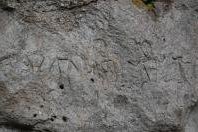
Considered as the oldest known art work in the Philippines,the Angono Petroglyphs are dated back to 3000BC. The drawings - 127 identified - are carved out from a rock shelter dwelling in the town of Binangonan - some 40 minute drive from Quezon City - in the Province of Rizal. Though highly regarded as a National Cultural Treasure, and one of the four highly endangered sites in the Philippines, this curiosity is not so known even to townsmen. The site isn't big - probably at a length of 50 meters long. Though authentic, there have been hearsays that the materials used in carving the petroglyphs that were found onsite are largely missing already within the National Museum's walls; thus, this might give a hard time in bolstering further the right to claim for a WHS title. Due to limited funds given in the maintenance of the site, the National Museum's satellite office, which is in charge in supervising the site - charges a reasonable fee of 10.00 PhP (.25$)
Keep reading 0 comments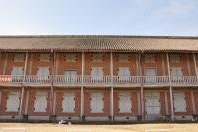
Since the industrial heritage is one of the most underrepresented categories of Asian World Heritage Sites, Japan has started to propose its industrial heritages to fill the gap, Tomioka Silk Mill (Tomioka Seishijou), the first state owned western-styled factory. Almost unknown to foreigners, the factory has been a landmark of Gunma Prefecture since the silk mill is quite famous among Japanese especially in school history class. As part of my 2012 Japan trip, I took the Shinkansen from Tokyo to Takasaki and then the private Joshin Line to Tomioka. From the train station, there was a color line on the road show direction to the mill, the same system uses in many hospitals! After walked for about 15 minutes, I was at the entrance of the complex of large, long brick building. The building turned out to be the eastern cocoon storage, inside there was small exhibition of how to make silk, sadly that there was no English at all. Then I went to see the twin western cocoon storage which was closed for renovation. These two storages were quite the highlight of the mill as they were considered to be the first brick factory building of Japan, the building was done by French and the roof by the Japanese, so it was quite interesting to see the European brick building topped with Japanese tiled roof.
After the storage complex, I went to the silk reeling machine hall, the machine was wrapped by dusty plastic sheet, the very surprising …
Keep reading 0 comments
AOA
My name is Yasir. I am working as trainer in Pakistan Telecom Company Limited (PTCL) in Islamabad. I have been visiting Jehlum for giving training to the PTCL workers (13 days) with my friend Farrukh Bashir.We visited Rohtas Fort today (28 march 20120. I rapidly fell in love by seeing it outside. It is an amazing place to visit; a glory of our past. The most amazing thing of the fort is its choice of place (who constructed the fort). It could be made on Tarakki Mountains for its high elevation. But considering the southern high dark stony edge (for defensive/safety) and Western River (for drinking, living water for man + animals) make sense. We were wondered how this fort would be build in this uneven and rocky surface. This place is watch worthy.
Keep reading 0 commentsOur visit to the Oryx sanctuary was simply unforgetable. The government of Oman at the instruction of the Sultan has set aside vast tracts of land (hundreds of square miles) to preserve the habitat for and to try and re introduce into the wild these rare animals following a scheme of protective breeding. We are fortunate to live in Oman and were able to get the correct permits faxed to us to give permission to visit and camp at the site (we were the only visitors). Whist there, we were treated to dawn and dusk patrols out with the rangers in the back of their pick ups. At night we camped in a most fabulous deserted spot, surrounded by Arabian Gazelle. Truly a lovely experience.
Keep reading 0 comments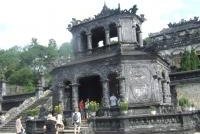
As Els says, the tombs of Hue are widely scattered, some more than 10 kms from the city centre. But they are reachable by taxi, or by boat along the Perfume River. One that I visited was the colourful tomb of Ming Mang, where you pass through several gates and temples before reaching the actual tomb on a hillside at the rear of the complex. Another was the tomb of Khai Dinh, a complex of grey stone with lots of steps and elaborate stone decorations.
While touring the district I also visited the tombs of Tu Duc and Duc Duc as well as the Thien Mu Pagoda.
Inside Hue itself the huge Citadel, a complex of many differing styles filled a large area. The memorial house in Phan Dinh Phung Street and the An Dinh Palace were much smaller, but were all within walking distance of the city centre.
Keep reading 0 comments
Currently, there are three Japanese castles listed as World Heritage Site, the magnificent Himeji Castle, the lavish Nijo Castle of Kyoto, and the unique Ryukyuan Shuri Castle in Okinawa, Hikone Castle is on the tentative list since 1992 that its status is becoming uncertain; however the recent move of Kamakura, another long pending site on the tentative list, I am suspecting that the fate of Hikone is going to be revived soon. In my idea, the perfect preserved Japanese castle should have an original main tower, a residence quarter and a castle garden. Himeji Castle is the place that has all thing I mentioned, while Nijo Castle has perfect residence and gardens, its main tower was lost long time ago. Some famous castles only have main tower like Matsumoto, Hirosaki and Matsue, some only with gardens and turrets like Kanazawa and Edo. In case of Hikone Castle, it has the original wooden main tower which is quite lovely with beautiful multi-styles roof gables and gilded decoration, a piece of art, and the very fine castle gardens. Another plus of Hikone which similar to Himeji is that the labyrinth fortification layout is well preserved and noticeable.
Compared to Himeji, Hikone is very much smaller and inferior in almost every sense; only the decoration art and gardens are more superior to Himiji. The biggest contrast of these two castles are the location and usage, while Himeji is located on strategic point, many defensive elements for war are required, Hikone is totally …
Keep reading 0 comments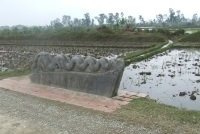
This site is in two parts, one each side of Vinh Loc village in the province of Thanh Hoa. The Citadel is almost a kilometer square surrounded by earth and masonry walls. In the centre of each side are masonry arched gateways. The area within the walls is now rice padi.
The Nam Giao altar resides on a hillside at the other end of the village.
Vinh Loc is accessible by bus from Thanh Hoa town.
Keep reading 0 comments
Over Christmas 2011 we visited all four of the designated areas of this site by car from Al Ain (UAE). We also visited Mirbat, another port associated with the frankincense trade, also site of the Battle of Mirbat, where in 1972 9 British & Fijian SAS soldiers held off 400 Yemeni attackers. Mirbat will soon be connected to Muscat by a coastal road, a more scenic but slower route to Salalah than that across the desert.
Keep reading 0 comments
I visited Camaguey in April 2011. Normally I love the cuban people, but I found them overwhelming as they hounded me in the city limits.
The preserved old town is beautiful, but surrounded by the slums characteristic of a third-world city. The streets are very narrow and seemed very difficult to navigate (I was not driving).
Am I glad I went? Yes. Am I glad I paid for a tour instead of trying to make my way through the city myself? definitely. Would I revisit the city? Probably not. That said, the province of Camaguey itself is beautiful.
Keep reading 0 comments
February 2012, its the moment of decision. To go or not to go to Iran. I had booked this trip a while ago but did not anticipate that the political situation was so tense at this time. Israel is assumed to be ready to bomb the nuclear sites in Iran as early as April and the US could be dragged in via the Straits of Hormuz etc. Added to the fact that the US does not have an embassy in Iran makes it even more tricky.
In the end I decided that March is a window of calm and off we went. This is not a forum for discussion on politics but I am now convinced that religion and politics should never be in the same room. Political power through religion is extremely dangerous.
Ardebil has been a 'pilgrimage' goal of mine for over 20 years because of the collection of Chinese porcelains (to be discussed later). It happens to be the mausoleum of a Sheikh Safi-Od-Din. He was credited of turning Iran away from Sunni Islam to Shite Islam and so the shrine is a pilgrimage site to many religious people in Iran.
The complex is not huge but the decoration is delicate and beautiful. It was built by Safi-Od-Din's grandson to honor his grandfather during the Safavid period and its importance grew over time. The entry is through a formal garden complex over 100 meters and through a door into the courtyard surrounded by facades of blue tiled …
Keep reading 0 comments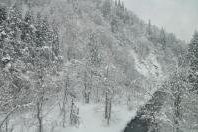
Currently the single natural World Heritage Site in the region of Tohoku or Northern Honshu, Shirakami-Sanchi is the name of the inaccessible beech forest mountain range in western Aomori Prefecture and Northern Akita Prefecture. I used the word 'inaccessible' because the inscription area is almost impossible to enter as there is no road or tourist facility at all, there is only one place that is really in the core zone that opens to public which are the Anmon-no-taki Fall. All the tourist centers and museums which other reviewer mentioned as well as the the Juni-Ko area and its nearby hiking trail to Shirakamidake Peak are also outside the World Heritage Site!
Since I visited the area in March, all the hiking routes as well as the Anmon-no-taki were closed due to heavy snow. I had no choice but have to use the most popular option of all tourists in order to see the mountain, a train. There are two rail lines that can provide a view of Shirakami-Sanchi Range; the first one is the Gono Line with spectacular view of whole range and Japan Sea, the second one is Ou Line with view of beech forest inland valley. I took both lines and found out that while the Gono line was very impressive with Mountain View, the view from Ou Line was very pretty similar to Black Forest in Germany. Since train riding was very time consuming so plan carefully for all connections, also better to buy the food from …
Keep reading 0 comments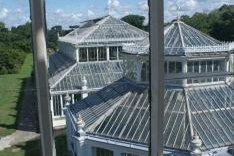
The highlights at Kew Gardens are the two greenhouses from the Victorian period, the Temperate House and the Palm House. Both are marvellous examples of glass and iron structures. The sheer size of the Temperate House is impressive and the diversity of plants is incredible. I liked best to climb the spiral stairs and to walk around the galleries (photo). I visited Kew Gardens together with a biologist, which was a double-edged experience. She knew almost all the plants and it was interesting to hear a lot of details about all these exotic species, their habitats and characteristics. On the other hand, it was often exhausting to go just a few steps forwards to the next plant. And now I have hundreds of photos of plants and details of plants on my computer, in addition to the many pictures of the buildings themselves, which I took.
Also worth visiting is the modern Princess of Wales Conservatory, which houses plants from ten different climatic zones. It was opened in the 1980s, and it is interesting to compare its modern architecture with the Victorian greenhouses. Not to be missed are the beautiful Waterlily House and the small Alpine House. And I was very impressed by the old giant trees that are everywhere throughout the park. There is also a Royal Palace, the Kew Palace, but we decided not to visit - plants were clearly the topic of the day. For the way back, we took a boat to Westminster. That was very …
Keep reading 0 comments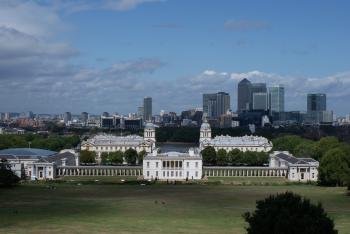
London is one of my favourite cities in Europe and Greenwich is one of my favourite places in London. I've been several times in London, most recently in August 2010, and each time I visited Greenwich. In my view, the Royal Greenwich Observatory is the most beautiful place of the WHS. The view from the observatory to the Queen's House, the Royal Naval College, and the modern office buildings on the Isle of Dog in the background is marvellous (photo). On the roof of the observatory a red Time Ball was installed. This ball is still being pulled up every day and falls down exactly at 1 pm. Once the ships on the Thames used this procedure to set their chronometers to the exact Greenwich Mean Time. The problem of exact time measurement and thus the accurate determination of longitude of a ship at sea and how it was resolved is a major theme of the museum. There you can admire the historic marine chronometers by John Harrison. And of course I stood on the prime meridian and took a photo of my feet.
Also worth a visit are the Painted Hall at the King William Building and the Queen's House with the tulip stairs. Part of the WHS is also the lovely centre of Greenwich with its Georgian and Victorian buildings. And it's funny to walk through the Greenwich foot tunnel (not for people with claustrophobia) to the opposite bank of the Thames. There you can enjoy the view …
Keep reading 0 comments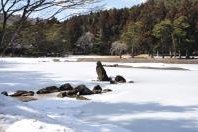
Located in the Tohoku or Northern Japan that severely suffered from earthquake and tsunami in 2011, Hiraizumi was selected as a World Heritage Site, since then the government used the inscription as the symbol of hope of this region. From Matsushima, a beautiful bay near Sendai which was hit by tsunami, I took a train to Hiraizumi. After kept my luggage in the coin-storage, I walked from the very lovely train station to Motsu-ji Temple. The town itself looked very clean and new, hard to believe its status as historic town, I thought this was the result of World Heritage Site beautification process. After short nice walked I was at Kanjizaio-in, the temple ruin was actually a large lawn with some trees and bushes around a pond, a fine place but nothing remarkable.
Motsuji Temple was my next destination, as I visited in March, this ancient garden turned to be the ice rink! However, the garden was lovely and photogenic with stones and pebbles around the pond similar to many Zen gardens in Kyoto, the most important part of the garden was the standing rock, if you saw some old photograph, you may notice that the rock had been changed its position! Then I took the bus to Chusonji Temple, the bus system of Hiraizumi was really well designed for tourists, there was a loop line called Run Run Line (pronounce like “ruin ruin” and be careful there is another bus line called Ran Ran Line that connect …
Keep reading 0 comments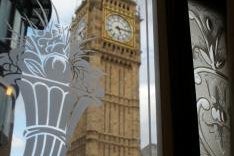
Certainly, the Houses of Parliament is a must see. All tourists take photos from the Westminster Bridge or the opposite bank of the Thames. My photo is from the inside of a pub across the street. If you are in London during the Summer Opening, you should take the opportunity to visit the interior of the Parliament building (recently, there are also tours on Saturdays throughout the year, I think). It is worthwhile despite the long queues at the ticket counter. But I would recommend to order a ticket in advance via this website. This was very convenient, we just had to be at the entrance about 15 minutes prior to the start of the guided tour. We took a tour in English, but there are also tours in other languages. The tour includes the most important areas of the Palace: Westminster Hall, the Robing Room, the Royal Gallery, Lords Chamber, Central Lobby, and the Commons Chamber. It was great to see all these famous rooms that are so full of history. The Houses of Parliament are very different from other parliament buildings in Europe, in particular the Common Chamber. It is a relatively small rectangular room and the two political parties sit opposite each other. The tour was one of the best guided tours I've ever attended. Our guide was excellent, he told many interesting facts about the building, the English history, and he described in detail the traditional State Opening of Parliament. This is a traditional ceremony, …
Keep reading 0 comments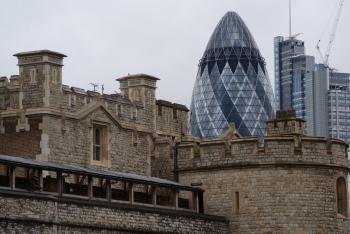
There is no doubt that the Tower is worthy to be on the WH list because of its historical significance. However, every time when I visited London, I've viewed the Tower from the outside only. The high entrance fee and the queues at the ticket office have deterred me. Moreover, I'm not very interested in the crown jewels and the collection of arms and armour. Anyway, in 2006 I visited the interior, simply because I thought that otherwise I could not tick off this WHS. It was very busy and the Beefeater tours were too crowded to really enjoy them. I visited the White Tower and had a nice walk around the walls, but I spent not too much time there. I would not say that I was disappointed because I did not expect too much.
But during my last visit in London in summer 2010, I've partially changed my opinion. I attended the Ceremony of the Keys, a ceremonial that takes place each night since the 14th Century. It begins exactly at 9:53 pm. The main gates of the Tower are locked up following a centuries-old ceremony. The Chief Warder and the guards speak always the same words. During the ceremony, it is not allowed to walk around, to talk, and to take pictures. Visitors can attend for free, but a ticket is required. This ticket must be ordered by regular mail several weeks before the requested date (Information on the website of the Tower). The ceremony …
Keep reading 0 comments
my experience at idanre hill is one i will not forget for a long period of time. since it happened to be a school excursion i had on other option than 2 climb to the top. it took me a long time to climb. and when i came back down my legs were shaking. but i will love to go when i have another chance to do so. although stressful but i loved everything i saw.
Keep reading 0 comments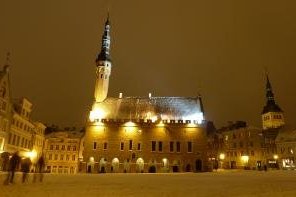
This was a great place to spend a cold mid-winter weekend. I don’t think I have ever visited an historic centre that is so thoroughly preserved as Tallinn. It seems almost completely devoid of modern buildings and real tourist traps like so many cities of this calibre in Europe are. But Tallinn still had tall buildings and a modern heart, right outside the historic centre, meaning it didn't feel like a museum.
We just had great fun wandering around the snowy streets and shuffling into café’s and restaurants to warm up. The view from Toompea castle was very nice, and the Igloo bar that was selling hot chocolate was a lovely reward for the icy climb, they even gave me a discount as it was my birthday. I also enjoyed the interiors of Alexander Nevsky cathedral and the art in St Nicklaus’ church.
One quirk that was aimed at visitors, but perhaps I wouldn't describe as a tourist trap is the Olde Hansa restaurant. It serves is a medieval food, but it is exceptionally rigorous using only produce available in Tallinn's medieval heyday, likewise the decoration is very authentic , the whole place is lit entirely by candles, and you will really have to hunt hard to find something that wouldn't have been around in the 15th century. They also have a lovely tavern under the arches of the town hall. I'm not sure if I can say the food was great but it certainly was interesting (they even had …
Keep reading 0 comments